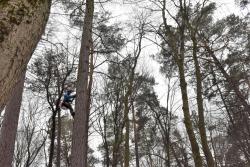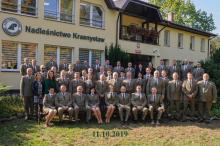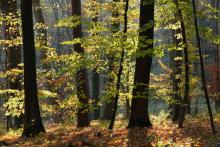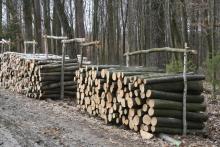 Asset Publisher
Asset Publisher
Sale conditions
Sale conditions of wood are specified by the regulation of Director – General of the Sate Forests.
Within the framework of the individual sale , the foresters try to meet the fast growing demand, because more and more people use wood in order to heat their houses. Contrary to general opinion, these are not only village people, even though they prevail among recipients. The growth of firewood demand is the result of occurrence of new housing estates built in the suburbs of large agglomerations, where houses are usually equipped in fireplace heating installations.
Firewood is not only the most ecological heat source, but also is much more attractive in respect of relation of price and electric efficiency, rather than cola, oil, gas or electric power.
In recent years, the Sate Forests increased the sale of firewood of one third – up to over 4 million cubic meters annually. Firewood is not only the most ecological heat source, but also is much more attractive in respect of relation of price and electric efficiency, rather than cola, oil, gas or electric power. Some of customers choose already prepared and cut into pieces wood, the others very willingly obtain it by themselves after arranging all details and fulfilling particular safety conditions, and after paying the fee; that concerns mainly so called "thinnings". Such a raw material is very cheap, that is why many people from village areas profit from such possibility.
 Asset Publisher
Asset Publisher
Zbiór szyszek z drzew stojących
Zbiór szyszek z drzew stojących
 Wejście na drzewo , fot. Karolina Berecka
Wejście na drzewo , fot. Karolina Berecka
 Przygotowanie do wejścia na drzewo, fot. Karolina Berecka
Przygotowanie do wejścia na drzewo, fot. Karolina Berecka
 fot. Karolina Berecka
fot. Karolina Berecka
Zima to odpowiedni czas na zbiór szyszek z drzew iglastych. Na terenie Nadleśnictwa Krasnystaw trwa zbiór szyszek modrzewiowych z drzew matecznych.
Zbiór szyszek to trudne zadanie i jest dużym wyzwaniem, ponieważ trzeba wspiąć się na drzewo, a następnie dosięgnąć szyszek rosnących na cienkich gałązkach w koronie drzew. Zerwane szyszki arborysta umieszcza w worku, który po napełnieniu bezpiecznie opuszcza na ziemię.
Praca na wysokości wymaga odpowiedniego przygotowania i umiejętności, dlatego można powierzyć je wyłącznie doświadczonej osobie z kwalifikacjami.
Przez kilka dni arborysta wspinał się na wytypowane drzewa rosnące w leśnictwach Rejowiec i Bończa.
Szyszki modrzewia dojrzewają późną jesienią w roku kwitnienia, a nasiona zaczynają się wysypywać z nich pod koniec zimy. Obfity urodzaj nasion modrzewia występuje, co 2-4 lata, a szyszki zbiera się od grudnia do lutego.
Zebrane szyszki, w pierwszej kolejności trafią do wyłuszczarni nasion, gdzie pozyskane z nich nasiona będą podlegały ocenie. Następnie umieszczone zostaną w specjalistycznych chłodniach. Finalnie będą stanowić kolejne pokolenia drzewostanów.









